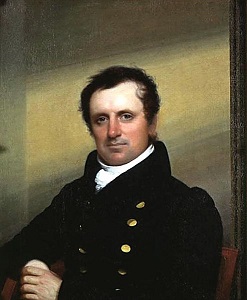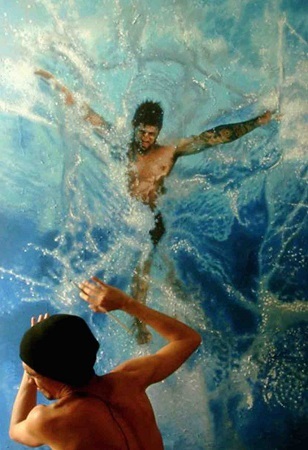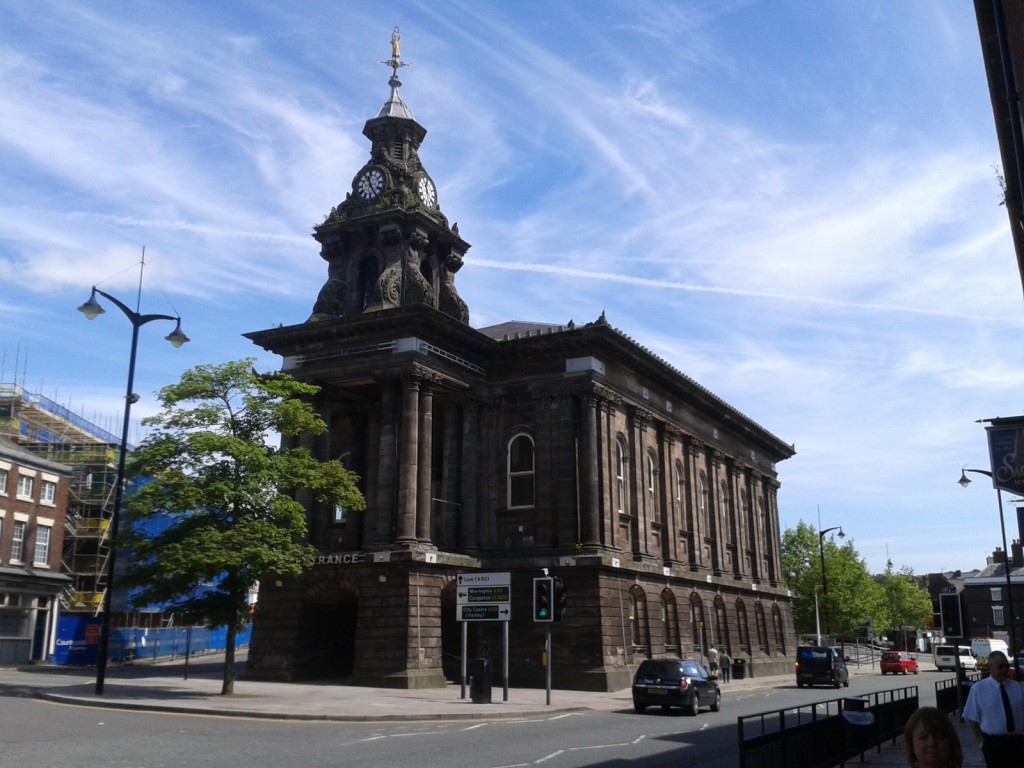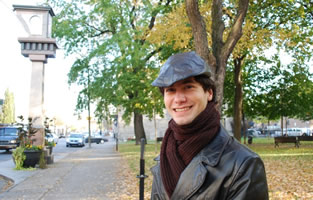De Amerikaanse schrijver James Fenimore Cooper werd geboren in Burlington, New Jersey op 15 september 1789 als zoon van een Congreslid van de Verenigde Staten. Nog voor zijn eerste verjaardag verhuisde het gezin naar Westchester County, New York. Reeds op veertienjarige leeftijd vatte hij zijn studies aan op Yale, maar behaalde daar uiteindelijk geen universitaire graad. Hij werd matroos op de koopvaardij en ging op negentienjarige leeftijd bij de marine. Daar behaalde hij de graad van adelborst nog voor zijn vertrek in 1811. Toen hij 22 was huwde hij met Susan DeLancey. Samen hadden ze 7 kinderen. Zijn eerste boek “Precaution” (1820) publiceerde hij anoniem, daarop verschenen er verschillende andere van zijn hand. In 1823 publiceerde hij “The Pioneers”, de eerste uit de Leatherstocking-reeks met de woudloper Natty Bumppo (deze figuur is gebaseerd op het leven en de avonturen van Daniel Boone) in de hoofdrol, waarin hij deze volgt in zijn vriendschap met de Delaware indianen en opperhoofd Chingachgook. Coopers beroemdste roman zou echter “The Last of the Mohicans” (1826) worden, een van de meest gelezen boeken uit de 19e eeuw. In 1826 verhuisde Cooper met zijn gezin naar Europa, om daar als vertegenwoordiger van de regering van de Verenigde Staten te gaan werken. Tijdens zijn verblijf daar schreef hij het in Parijs gepubliceerde “The Red Rover”, “The Waterwitch—one” en andere zeeverhalen. Hij raakte ook erg betrokken in politieke discussies over de Verenigde Staten en publiceerde daarover onder meer in Le National. In zijn drie volgende romans “The Bravo” (1831), “The Heidenmauer” (1832) en “The Headsman: or the Abbaye of Vigneron” (1833) verwerkte hij ook zijn republikeinse overtuigingen. In 1833 keerde hij terug naar Amerika, waar hij onmiddellijk “A Letter to My Countrymen” publiceerde, waarin hij scherp uithaalde naar de betrokkenheid van de Verenigde Staten in een aantal controversiële zaken waar hij in Europa mee te maken had gekregen.
Uit: The Last of the Mohicans
“It was a feature peculiar to the colonial wars of North America, that the toils and dangers of the wilderness were to be encountered before the adverse hosts could meet. A wide and apparently an impervious boundary of forests severed the possessions of the hostile provinces of France and England. The hardy colonist, and the trained European who fought at his side, frequently expended months in struggling against the rapids of the streams, or in effecting the rugged passes of the mountains, in quest of an opportunity to exhibit their courage in a more martial conflict. But, emulating the patience and self-denial of the practiced native warriors, they learned to overcome every difficulty; and it would seem that, in time, there was no recess of the woods so dark, nor any secret place so lovely, that it might claim exemption from the inroads of those who had pledged their blood to satiate their vengeance, or to uphold the cold and selfish policy of the distant monarchs of Europe.
Perhaps no district throughout the wide extent of the intermediate frontiers can furnish a livelier picture of the cruelty and fierceness of the savage warfare of those periods than the country which lies between the head waters of the Hudson and the adjacent lakes.
The facilities which nature had there offered to the march of the combatants were too obvious to be neglected. The lengthened sheet of the Champlain stretched from the frontiers of Canada, deep within the borders of the neighboring province of New York, forming a natural passage across half the distance that the French were compelled to master in order to strike their enemies. Near its southern termination, it received the contributions of another lake, whose waters were so limpid as to have been exclusively selected by the Jesuit missionaries to perform the typical purification of baptism, and to obtain for it the title of lake “du Saint Sacrement.” The less zealous English thought they conferred a sufficient honor on its unsullied fountains, when they bestowed the name of their reigning prince, the second of the house of Hanover. The two united to rob the untutored possessors of its wooded scenery of their native right to perpetuate its original appellation of “Horican.”
Winding its way among countless islands, and imbedded in mountains, the “holy lake” extended a dozen leagues still further to the south. With the high plain that there interposed itself to the further passage of the water, commenced a portage of as many miles, which conducted the adventurer to the banks of the Hudson, at a point where, with the usual obstructions of the rapids, or rifts, as they were then termed in the language of the country, the river became navigable to the tide.”

James Fenimore Cooper (15 september 1789 – 14 september 1851)
Portret door John Wesley Jarvis, 1822




